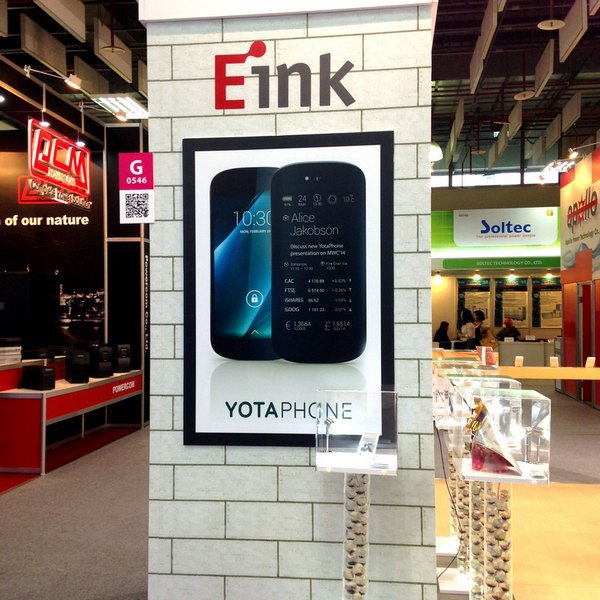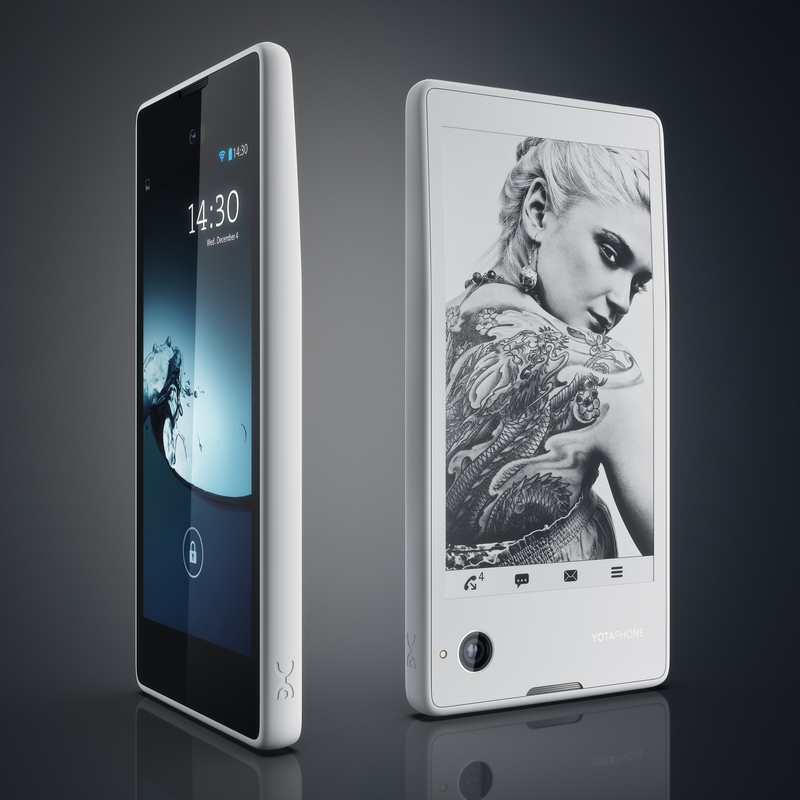Smartphones and electronic inks: a difficult symbiosis

We talk a lot about one of the main advantages of YotaPhone, the second display on electronic ink. But we usually did not go into details: why we chose this technology, what problems and difficulties got in our way, what are the advantages and disadvantages of displays on electronic inks, especially in relation to smartphones - we want to tell about all this.

')
Electronic ink technology has a number of fundamental differences from traditional LCD displays. Let's look at what they are.
In liquid crystal displays, the image is formed as follows: each pixel consists of three subpixels, red, blue, and green. Behind the pixel matrix is the backlight. Subpixels themselves are cells in which liquid crystals are located. Under the influence of electricity, they change the configuration, which allows you to adjust the color of the entire pixel. When electricity is turned off, the liquid crystals return to some original form, the backlight turns off and the image disappears.

In the "electronic paper" liquid crystals do not exist at all. Instead, each pixel contains a capsule with solid pigment particles, and there is no light behind the pixel matrix. Electrophoresis is used to form an image: when electricity is applied, the capsules are rotated by either side. To save this state, they do not need energy, the capsules remain in the same position until the next electric pulse is applied.


Electricity is not spent on highlighting and maintaining the state of pixels, just to change the image. As a result, such a display consumes several times less electricity compared to liquid crystal displays.
The second advantage of electronic ink is its excellent readability in bright light, like a regular printed text. This is due to the use of solid particles for imaging. But any medal has two sides, and when working in the dark you will need an external light. However, as in the case of a paper book.

The main drawback of electronic ink is the monochrome image, the most high-quality samples display 16 shades of gray. To date, there is no high-quality technology of color electronic ink. The weaknesses of the existing development:
• Low color saturation, especially in low ambient light.
• On average, half the resolution compared to monochrome displays.
When choosing a technology for the second display YotaPhone decisive factor was the very low power consumption of electronic ink. And their ability to save the image even with a fully discharged battery expands the range of scenarios for using a smartphone. The display on electronic ink does not need to be turned off to save energy, it always works. Pre-selecting the information you want to receive on the second display, you will not even need to take the smartphone in your hands to immediately be aware of various reminders, updates and notifications. Just look at the second display. More about this we wrote here .

Difficulties implementing a second display
People often ask why it is impossible to make a second display of the same resolution as the first one? This is due to serious technological obstacles. For example, a second display with a resolution of 1280x720 will require the introduction of a highly integrated control chip, which simply does not exist yet. And its development will require many months of work. But even if it existed, a large number of conclusions and a considerable physical size would not allow the chip to fit into the case of a modern, comfortable smartphone.
It must be said that the control chip has become the main source of difficulties when working on both generations of YotaPhone. It is a silicon array and cannot be bent without breaking. This greatly limits our ability to create a curved body. In particular, the second-generation YotaPhone case has only a slight bend on the sides.
The second reason hindering the growth of the resolution of the second display is the increase in the size of the pads around the perimeter of the matrix. Such an array of findings is very difficult to hide under the narrow frame.
The lamination of the panel with the second display, especially on bends, became a difficult task when assembling a smartphone: this process requires very high accuracy. Otherwise, sticking, formation of air bubbles, cracking and so on are possible. The situation is complicated by the fact that the YotaPhone of the second generation was the first smartphone using Gorilla Glass curved glass, which further complicates the assembly process.
The features of electronic ink displays require a very careful approach to interface design. Each element must be created taking into account the monochrome of the image, the lack of illumination and a low refresh rate. For the same reasons, you need to optimize the display of various information - text, images, animation and video.
On the second display in the second generation YotaPhone
In the fall of this year, the YotaPhone of a new generation is coming out. He will receive a second display in electronic ink with a resolution of 960x540. It will be fully touch, which will not only increase the comfort of work, but also expand the possibilities of controlling the smartphone when working with the main display.
Some users fear that the touch panel will degrade the sharpness and contrast of the second display. A few years ago it could affect the quality of the image. But today, the touch panels have already reached such a level of “invisibility” that practically do not have a noticeable effect.

A few years ago, devices appeared on the market with electronic backlit ink. We are considering the possibility of introducing the backlight in the YotaPhone of the second generation, however, this idea has several “buts”:
• High power consumption. The backlight would significantly reduce the main advantage of the second display - energy efficiency.
• Difficulty of high-quality installation around the perimeter of a thin, curved display.
• Thickening of the assembled display unit.
• Increased device cost.
Future plans
Now a number of manufacturers are working to create color displays on electronic inks, as well as to increase the speed of updating the image. We are closely following the progress of developers and, of course, we are considering the possibility of using new products in future generations of our smartphones. In particular, we decided to periodically submit to your court the most interesting and promising ideas that can be embedded in our smartphones. Follow new posts.
Source: https://habr.com/ru/post/227173/
All Articles